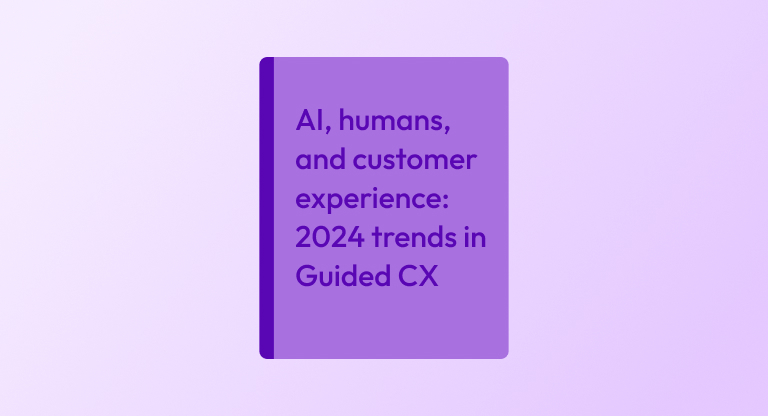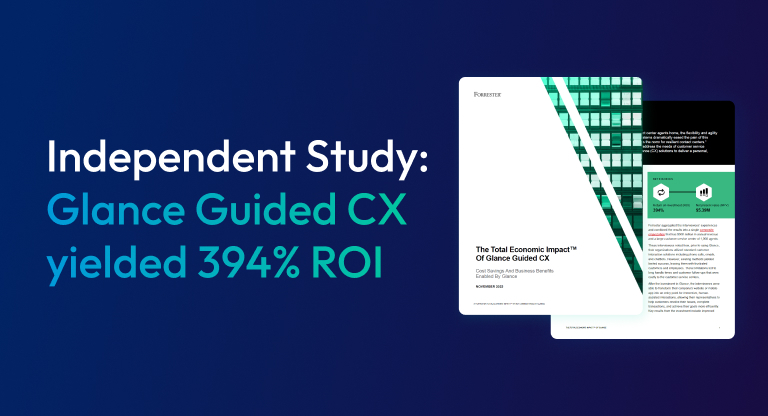Let’s say you’re selling a product that’s simple to use: sneakers, for example. You can rest assured that once a customer has those sneakers, they won’t need to be taught how to use them. (Although you may want to put a shoelace-tying tutorial on your website, just in case.)
But if you’re selling something more complex (and less newbie friendly), such as a technology platform or digital service, your customers won’t automatically realize the true value of your product upon purchasing it – you have to help get them there.
That’s why – whether you’re a B2B company whose product helps clients run their businesses, or a B2C company whose product helps your clients directly – you’ve always had to think about customer onboarding.
And you still do. Only now, thanks largely to changing customer expectations, the way you think about customer onboarding has to change – as does the way you deliver it. (Spoiler alert: it’s even happening in contact centers these days.)
But before we get into all that, let’s quickly recap why customer onboarding matters so much …
Why is customer onboarding so important?
Unless your product is obviously simple, skimping on customer onboarding can be disastrous.
If your product is complex and customers aren’t shown how to use it then – newsflash! – they won’t use it. (They might be able to work it out for themselves if the design is sufficiently intuitive or if there are tutorials out there, but don’t expect them to always thank you for the challenge.)
If users feel like they aren’t squeezing the full value out of your product, they’re not going to be happy. Quite the opposite: they’ve invested in your product and it’s costing them dearly. If they can’t get the hang of it, they’ll become – at best – a light user. And pretty soon, they’ll be an ex-customer.
So there’s that. But getting customer onboarding right isn’t just about avoiding disaster. There’s a lot of upside here, too. Onboarding is a golden opportunity to wow your customers.
By getting them over any initial usage humps and transforming them from novices to avid users, you’ll secure their gratitude as well as their usage. They could even become cheerleaders for your product, helping to take some of the work of getting others within their business on-boarded off your hands.
In summary: not onboarding customers can be a disaster. And going above and beyond to onboard customers can be a major win.
These fundamental reasons why customer onboarding is important and valuable haven’t changed much in the past decade. But the way you have to approach onboarding definitely has.
And this is where things get really interesting (and challenging) …
How has customer onboarding evolved?
Customer onboarding used to be about all day onsite training sessions. Sometimes attendees would be given manuals to take home and read (mostly in bed, when needing a cure for insomnia).
But the world has changed a lot in recent years – not least when it comes to people’s expectations around using technology.
COVID catalyzed an already-creeping wave of digitization, forcing all sorts of people (including the previously technophobic) to become comfortable with socializing, purchasing, working and learning online. As a result, people now expect intuitive digital experiences that allow them to do things in the way they prefer to do them. And yep: that includes customer onboarding.
So you need to cater to the users who prefer to do things themselves, with minimum human interaction – and to the users who want and expect human assistance anytime they (virtually) raise their hand for it.
What’s more, you need to provide your users – whether they’re consumers or business users – with the option to onboard and “re–onboard” onto your product on a continuous (and semi on-demand) basis.
After all, they’re having to learn to use more complex tech products than ever these days – and will only need to use some of these products occasionally, possibly once annually, if not even less. They need their memories refreshed – at their convenience.
Another factor driving the need for on-demand onboarding is the constant evolution of some products – particularly in the world of SaaS, where products are routinely updated.
A user who you’ve onboarded to your complex SaaS product today will likely need to be schooled on how to use new features and functions in a few months (if not a month, or less) down the road.

How can I onboard customers on a continuous basis?
Besides providing new customers with flexible options for onboarding (including self-service and organized training sessions), a great way to think about onboarding customers is to treat every interaction you have with customers (within reason) as an opportunity to help them upskill.
One place we’re increasingly seeing onboarding and upskilling happening is the hub of customer interactions in most businesses: the contact center.
With less complex customer requests handed off to self-service knowledge management portals and automated channels (e.g. chatbots), contact center agents are finding themselves freed up to handle more complex usage (and training) issues.
When support agents are equipped with tools that make it easy to understand and resolve browser or mobile app-based issues, they’re in a great position to teach customers to better use the products.
And once an agent has helped solve the issue the customer got in touch about, they can then go on to use the same interaction as an upselling opportunity. Showing a (now pleased) customer how to use a new capability, for example, could convince them they need to upgrade their product to gain access to that capability.
(That’s what SaaS-based email marketing company Constant Contact has done using our Guided CX technology. You can read all about it in our case study.)
So let’s say you have the technology in place to provide your product users with digitally accessible, flexible, and continuous training. How do you know if this is getting you results?
How can I measure the success of customer onboarding?
Your first instinct here might be to track usage of your product: some examples being measuring how many times users have logged in, and how much they’re using certain features and functions.
This makes sense, and can be very useful – provided you’re careful about what you’re tracking. If you’ve done a really great job onboarding, your users might be so proficient at using your tech that they won’t spend as much time using it!
That’s why you should also measure customer onboarding success by your customers’ success.
If you’re selling a B2B product, you might want to monitor how much your customer is selling (or purchasing, or scheduling, or booking …) through your product. How much time and money are they saving thanks to the efficiency gains your product’s given them? Is there business growing in a way you can connect to the customer’s use of your product?
If you’re a B2C company, customer success might look a little simpler: they successfully applied for their mortgage in one session, perhaps, or the second time they enrolled in your healthcare program they did it 50% faster than the first time. (Like we said, depending on the outcome, the less a user uses your product the better a job you might have done onboarding them!)
How can I start making my customer onboarding processes better today?
To provide your product users with the intuitive, interactive digital experiences they expect when you’re onboarding and upskilling them, you need tools to connect your product users and product experts and let them collaborate on-screen in real-time.
Why on-screen? Because when onboarding to browser or app-based products, your users and experts need to be able to see the same thing, at the same time, to be able to fluidly and effectively navigate through your product’s features and capabilities.
We’re talking about cobrowsing, on-screen gesturing, screen sharing and face-to-face video chat – all within your website or app.
We’re talking about adding Guidance to your customer onboarding experience. (And we know just the solution to do it.)
Find out how Glance can help improve all your customer experiences, including onboarding in a quick, no-fuss demo.





